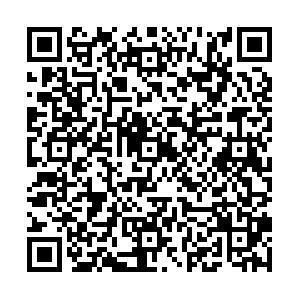Confined space physiological fatigue measurement based on photoplethysmography pulse wave signal
-
摘要: 通過有限空間100 min極限載人實驗,提出了基于光電容積脈搏波(PPG)的客觀疲勞測量方法并開發了光電容積脈搏波信號特征參數提取算法用來掌握生理疲勞的血液動力學與循環系統變化特征.研究結果表明,人體出現生理疲勞時,光電容積脈搏波信號平均周期顯著大于未疲勞狀態(p<0.001),血管阻力增大,每搏射血量明顯下降;計算了未疲勞與疲勞狀態下光電容積脈搏波信號的兩種復雜度(KC復雜度和高階KC復雜度)發現,兩種復雜度計算結果一致,均為未疲勞時波形比疲勞時波形更平穩.因此表明光電容積脈搏波信號能夠捕捉到疲勞狀態的生理變化,解決了生理疲勞的客觀測量與快速判斷問題.Abstract: Confined spaces are extremely common in industrial production and emergency rescue situations, and are also widely found in the fields of mining, chemistry, metallurgy, construction, aviation, submarines, emergency hedging, and others. Confined space operations and living environments are characterized by small spaces, poor ventilation, lack of oxygen, high temperatures and humidity, and poor lighting and communication. Exposure to this operating environment over even short periods of time causes thermal stress and changes in the oxygen content of the human body, which lead to physical discomforts such as increased heart rate, increased blood pressure, and body temperature changes. As exposure time increases, the human body experiences fatigue, confusion, and other symptoms. The physical fatigue caused by the human body being exposed to confined space environments is the main causal factor in safety accidents. Therefore, a method must be developed to enable objective measurement and rapid determination of physiological fatigue. A 100-min-limit manned experiment was conducted in a confined space to test an objective fatigue measurement method based on the photoplethysmography pulse wave (PPG). An algorithm was then developed to extract PPG signal feature parameters to determine the hemodynamics and circulatory system changes that characterize physiological fatigue. As the most basic physiological signal of the human body, the PPG contains abundant information about hemodynamics and autonomic nervous system circulation. This information is reflected in parameters such as the wave shape, speed, and rhythm. The results indicate that when the human body experiences physiological fatigue, the average period of the PPG signal is significantly greater than that when it is non-fatigued (p<0.001), the vascular resistance increases, and the stroke volume per stroke is significantly decreased. The two types of complexity (KC complexity, high-order KC complexity) of PPG signals were calculated under fatigue and non-fatigue conditions. The calculation results was found for these two complexities to be the same, and the waveforms to be more stable when the body is not fatigued. Therefore, the results demonstrate that the PPG signal can capture the physiological changes of the fatigue state and provide objective measurement and enable rapid judgment regarding physiological fatigue.
-
Key words:
- physiological fatigue /
- photoplethysmography (PPG) /
- confined space /
- observable
-
參考文獻
[1] Giltvedt J, Sira A, Helme P. Pulsd multifrequency photoplethysmogroph. Med Biol Eng Comput, 1984, 22(3):212 [2] Avolio A P, Butlin M, Walsh A. Arterial blood pressure measurement and pulse wave analysis-their role in enhancing cardiovascular assessment. Physiol Meas, 2010, 31(1):R1 [3] Gil E, Orini M, Bailon R, et al. Photoplethysmography pulse rate variability as a surrogate measurement of heart rate variability during non-stationary conditions. Physiol Meas, 2010, 31(9):127 [4] Hou L X, Wei M, Wang X, et al. A novel non-iterative shape method for estimating the decay time constant of the finger photoplethysmographic pulse. J Zhejiang Univ Sci A, 2011, 12(6):438 [5] Reisner A, Shaltis P A, McCombie D, et al. Utility of the photoplethysmogram in circulatory monitoring. Anesthesiology, 2008, 108(5):950 [6] Huiku M, Uutela K, Van Gils M, et al. Assessment of surgical stress during general anaesthesia. Br J Anaesth, 2007, 98(4):447 [9] Bruck L. Confined space safety and rescue:challenges and lessons learned. Occup Hazards, 2012, 70(4):29 [11] Hancock P A, Vasmatzidis I. Human occupational and performance limits under stress:the thermal environment as a prototypical example. Ergonomics, 1998, 41(8):1169 [13] Galtsev A P, Grechko E I, Dzhola A V, et al. Spectroscopic measurements of atmospheric gas content:latitudinal distributions, seasonal variations, and long-period trends//Proc SPIE 2017 CIS Selected Papers:Optical Monitoring of the Environment. Moscow, 1993:104 [14] Verges S, Bachasson D, Wuyam B. Effect of acute hypoxia on respiratory muscle fatigue in healthy humans. Respir Res, 2010, 11(1):109 [15] Allen J. Photoplethysmography and its application in clinical physiological measurement. Physiol Meas, 2007, 28(3):R1 [16] Tamura T, Maeda Y, Sekine M, et al. Wearable photoplethysmographic sensors-past and present. Electronics, 2014, 3(2):282 [17] Ram M R, Madhav K V, Krishna E H, et al. A novel approach for motion artifact reduction in PPG signals based on AS-LMS adaptive filter. IEEE Trans Instrum Meas, 2012, 61(5):1445 [18] De Wilde R B P, Schreuder J J, Van Den Berg P C M, et al. An evaluation of cardiac output by five arterial pulse contour techniques during cardiac surgery. Anaesthesia, 2007, 62(8):760 [21] Westerbof N, Lankhaar J W, Westerhof B E. The arterial windkessel. Med Biol Eng Comput, 2009, 47(2):131 [22] Erem B, Orellana R M, Hyde D E, et al. Extensions to a manifold learning framework for time-series analysis on dynamic manifolds in bioelectric signals. Phys Rev E, 2016, 93(4):042218 -

 點擊查看大圖
點擊查看大圖
計量
- 文章訪問數: 867
- HTML全文瀏覽量: 304
- PDF下載量: 14
- 被引次數: 0



 下載:
下載:
